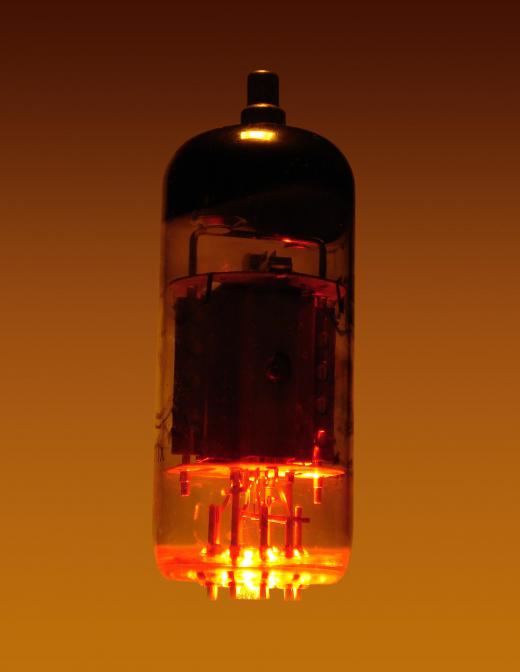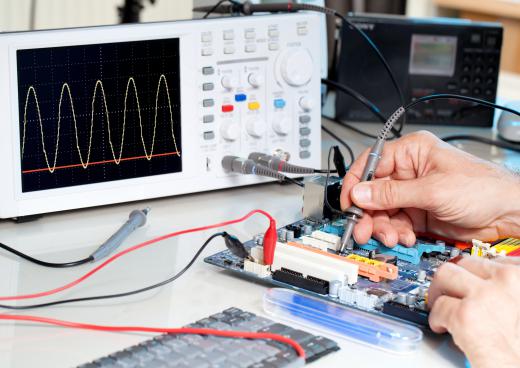An oscillograph is a tool used to measure electric current and voltage, and in general there are two main types: those that are electromagnetic and those that are built around cathode rays. Electromagnetic models are simpler and tend to be less common, though a lot depends on the use. The tool in both its forms has wide use in engineering, telecommunications, and medicine — basically anywhere where accurate measurements of electrical outputs are important. Technically speaking, an oscillograph is different from the related oscilloscope by virtue of its ability to store and save data; at least originally, scopes were only good for real-time measurements and weren’t able to capture data points for future reference. This isn’t usually true anymore, however, and as a result the terms are often used interchangeably.
Basic Concept and Main Uses

There are a number of reasons why people may want or need to measure electrical currents on a small-scale. Electronics manufacturers are a good example, and in these contexts a precise read of how much energy is flowing through a given device is really important to things like safety and compatibility with external outputs such as power cords. Measuring the currents coursing through motherboards of machinery and circuit breakers of buildings and offices is also important in a number of ways. In medicine, precise measurements of the electrical charges pulsed outward from the heart can give a good indication of health and potential problems in the arterial system. An oscillograph is a portable and convenient way of making measurements in these and similar settings.
Electromagnetic Models

The electromagnetic version is a surprisingly simple tool. Current is fed through the instrument and into a magnetic coil. Slight variations in the electric current causes momentum to build in the coil. This momentum is measured and any variations in current or voltage are derived from the speed and flex of the coil.
There are two common variants of the standard electromagnetic machine; one uses lasers, and the other has a direct output. When fitted with a laser, light is bounced from the laser off a curved mirror and back to a receiver. The time it takes for the light to return is measured instead of the coil being measured directly. This makes the readings more accurate and makes it easier to see smaller variations in the current. Direct output often takes the form of one or more arms drawing wave patterns on paper as the current is fed into the machine. This variation is the only form of direct output common in electromagnetic oscillographs, other forms of output are just strings of measurements that need interpretation before they are useful.
Cathode Ray Tube

Cathode-ray oscilloscopes use a small TV-like screen to show the actual wave pattern of the current as it travels through the device. When no current is fed through the device, the CRT displays a single stationary dot or a single dot moving vertically across the screen. When current is moving, the power moves through a series of plates that measure the variation in the current. The current causes these plates to fluctuate in relation to each other, and that movement is reflected on the screen by the dot moving up and down. This moving dot is actually showing the electric current in its wave form. This allows the device to measure not only standard current like the electromagnetic model does, but also waveforms such as heartbeats.
Progression and Advancement
The oscillograph and the related oscilloscope have come a long way since their introduction to the mainstream in the early 1800s. First came a very rudimentary model involving a pen mounted on a drum that marked waves in response to electrical stimulation. The earliest photographic models actually involved exposure papers, which persisted till the advent of more modern film; almost all devices today are digital, and many are able to store and transmit resuts electronically in real time.
